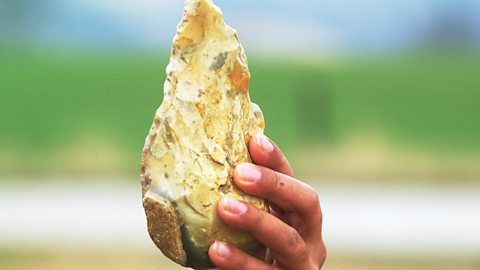Video summary
A 2,000 year old bucket, used on special occasions, or what remains of it, gives us a clue to the nature of the Iron Age, although most of the bucket was still made from wood and bronze.
Archaeologist Raksha Dave looks into iron mining in the Forest of Dean which dates back nearly 2,500 years where iron ore was found near the surface.
Later, pits such as Clearwell Caves, went deeper underground as demand rose for the newer, lighter but stronger metal.
People tried to keep the process of making iron secret to preserve their power. It was often regarded as magic.
This clip is from the series Ancient Voices.
Teacher Notes
You could compare the impact of iron weapons and tools with that of bronze. Which, in your opinion, had the biggest impact or made the biggest changes?
You could ask the children to describe what it would be like to mine iron ore 2,000 years ago before showing them the clip, then asking them how realistic their version was.
You could compare iron mining in the Iron Age with mining today, when huge machines are used.
You could show them the ochre used to create prehistoric drawings and let the children use the ochre to make their own drawings.
This clip will be relevant for teaching History and Social Studies at KS2 in England, Wales and Northern Ireland and 2nd Level in Scotland.
What does Stonehenge Gold tell us about the Bronze Age? video
Raksha explores Maiden Castle ÔÇô the biggest Iron Age Hill Fort in Britain. We find out how it was built and about the weapons they used to defend the entrance.

Iron Age daily life video
Archaeologist Raksha Dave explores Maiden Castle, the biggest Iron Age Hill Fort in Britain, to try and piece together what it would have looked like 2,500 years ago.
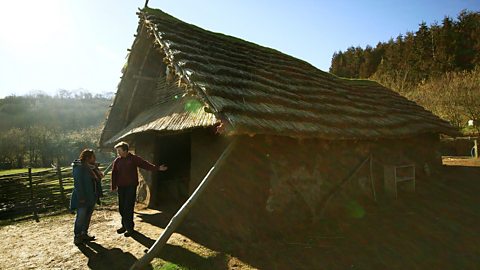
Discovering wool in Bronze Age Britain. video
Raksha visits Butser Ancient Farm and learns how woollen cloth was made in the Bronze Age, a re-enactor at the farm shows her how to use a spindle and loom.
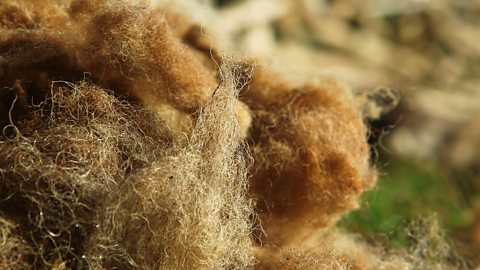
Discovering metalwork in Bronze Age Britain. video
Raksha visits Butser Ancient Farm to look at the beginning of the Bronze Age and construct a Bronze Age axe head in exactly the same way Bronze Age man would have done.

Iron Age forts and tribes. video
Raksha explores Maiden Castle ÔÇô the biggest Iron Age Hill Fort in Britain.We find out how it was built and about the weapons they used to defend the entrance.
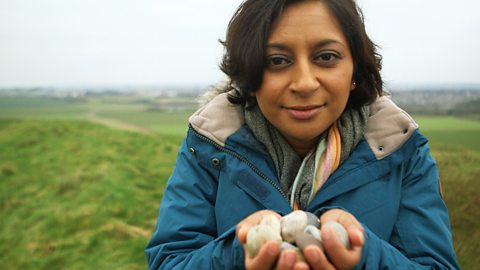
Stone Age farming and homes. video
Raksha explores life in Britain during the Stone Age first by looking at hunter-gatherers who lived by hunting animals and collecting fruit and nuts, and then moves on to explore the first farmers
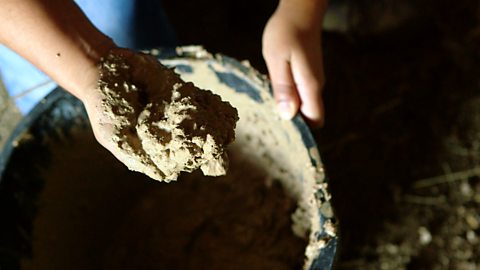
What do ancient bones tell us about the Stone Age? video
Raksha gives us a real insight into the life and times of higher status hunter-gatherers in the Old Stone Age by looking at The Red Lady of Paviland, one of the oldest skeletons found in Britain.
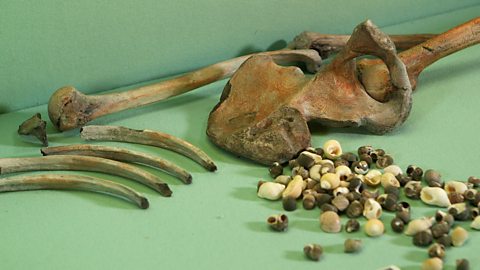
Discovering Stone Age tools made of flint video
Raksha explores the importance of flint to Stone Age man. A modern day worker makes a replica of a Stone Age arrow, showing us how skilled Stone Age people were in their use of flint.
